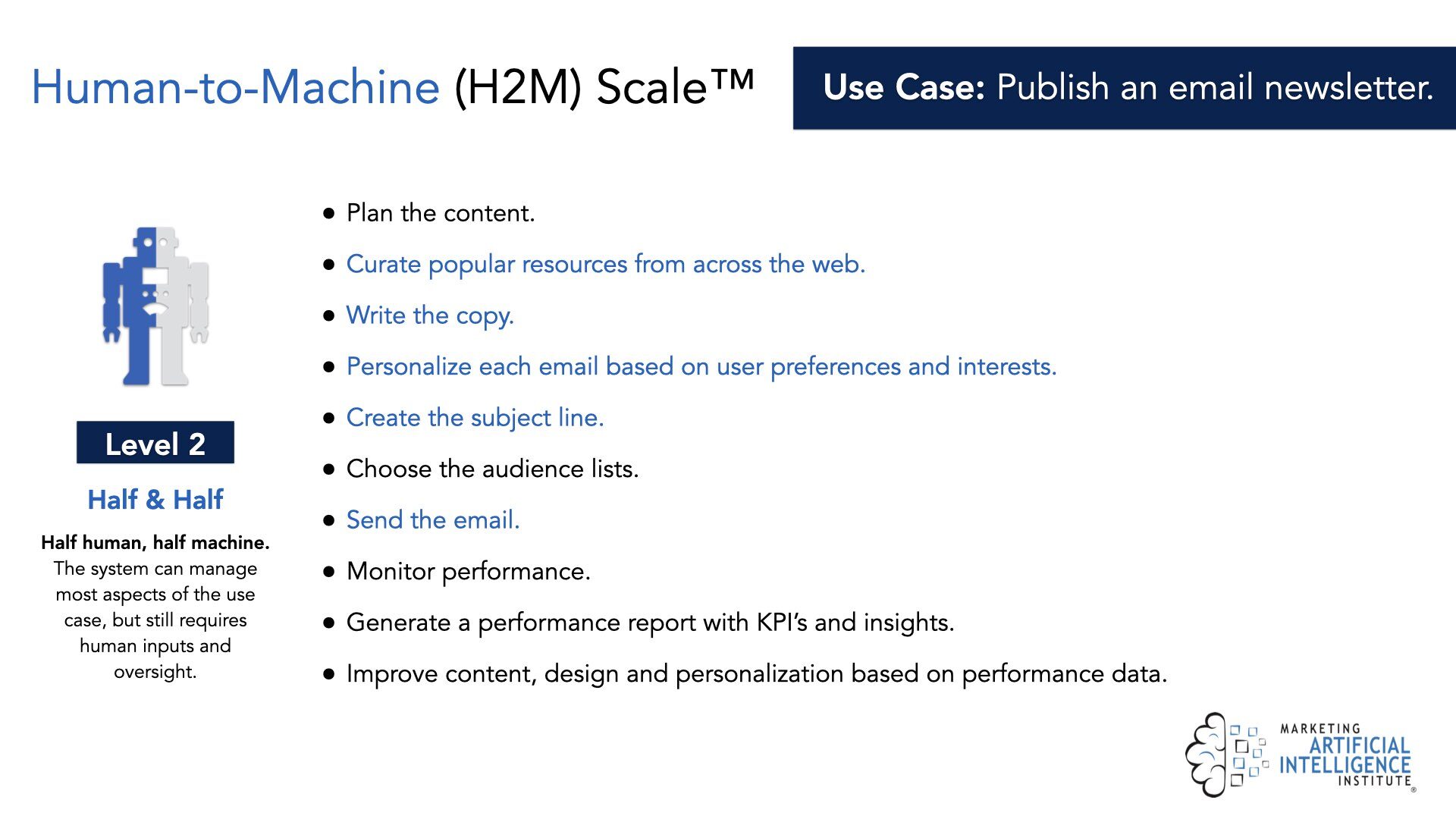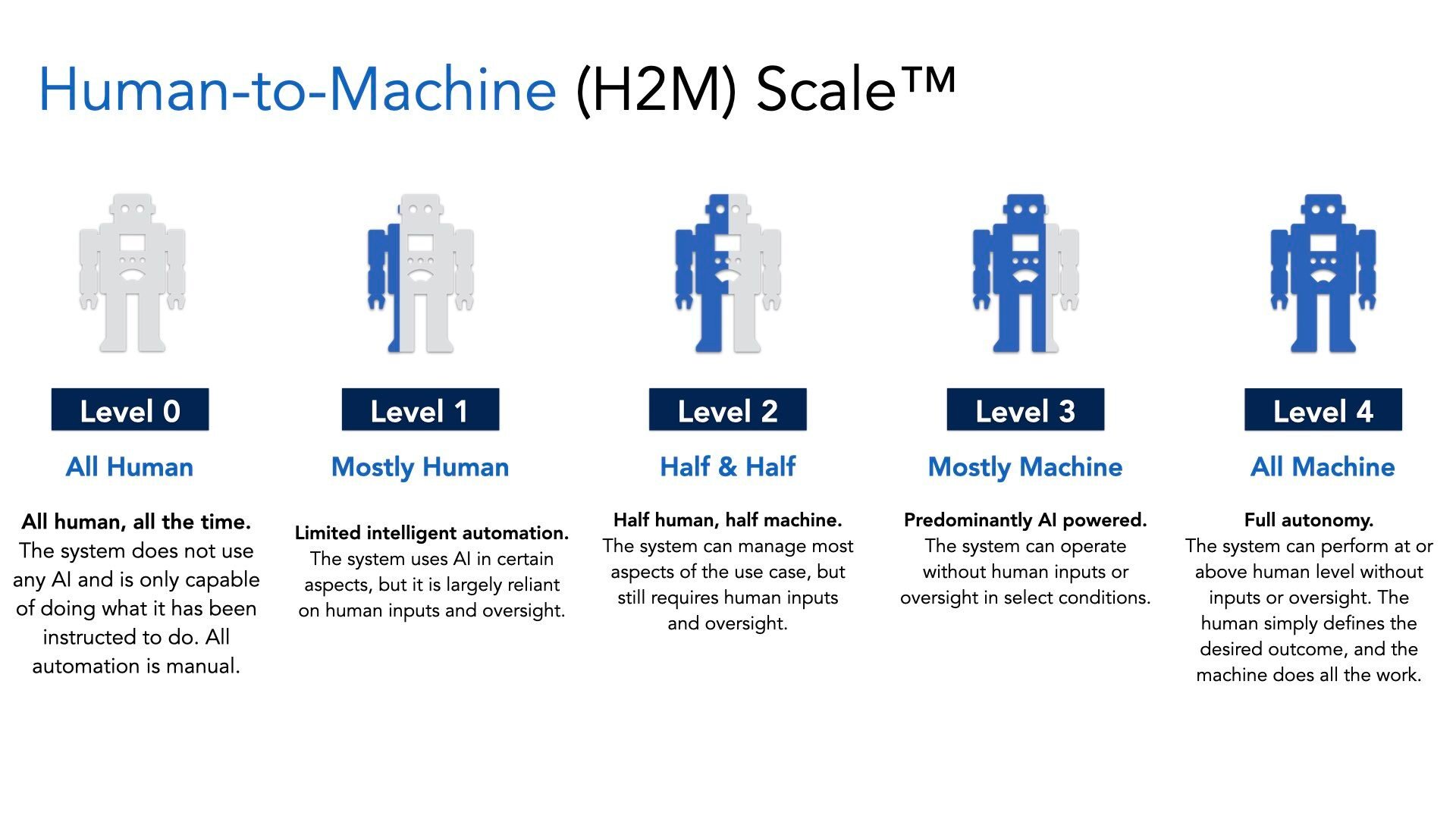The auto industry has a clever way of categorizing levels of automation in a vehicle. At its core is a simple question, “What does the human in the driver’s seat have to do?”
SAE International’s J3016 Levels of Driving Automation, as it’s known, has become the industry standard for rating how autonomous a vehicle is.
For Levels 0 - 2, the human is driving. Even if there are support features activated, the human is making the decisions and in control.
However, when a car reaches Level 3, the machine is now able to drive itself under select, controlled conditions. Tesla, with its Autopilot technology, is an example of Level 3 automation.
At Level 5, technically the steering wheel is no longer needed. The machine can drive itself, in all conditions, without human input or oversight. In 2020, Elon Musk stated that Tesla will be capable of Level 5 automation by the end of the year.
Now, J3016 doesn’t talk about AI in its scale, but none of the automation would be possible without it.
So, what can we learn from the autonomous vehicle industry?
All AI is Not Created Equal
Since we launched Marketing AI Institute in 2016, I’ve wanted a simple, universally accepted way to evaluate marketing AI technology. Not based on the sophistication of the AI, but, rather, the level of intelligent automation (i.e. AI + automation) that the AI enables.
We’ve profiled more than 70 AI-powered vendors on our blog, and track hundreds more. In the process, we’ve learned a few things about the state of marketing AI tech that make it challenging for marketers to assess and buy the right solutions.
First, there is a significant lack of product maturity in the market. Many of the AI-powered vendors have emerged in the last five years and raised a bunch of money on the promise of AI. But, their AI capabilities are often still early, and unproven.
This leads to the second challenge, overhyped branding. The vendors want to tout their machine learning, natural language processing and computer vision to differentiate their technology from traditional solutions, which they should, but the problem comes in when they exaggerate what it’s capable of doing.
A general rule of thumb we follow is to assume that any vendor who claims “the first” or “the only” is neither, and, if their site states that something is “fully autonomous,” it is not.
Which takes us to the third challenge, there is a lack of AI education for the vendor marketing and sales teams. This is what often results in the overhyped branding. Basically, since the marketers don’t fully understand the underlying technology, they struggle to explain it in simple terms for customers and prospects. They tend to focus on what it is, and what it does (often just using talking points from the engineers), rather than the outcomes it makes possible and why it’s smarter than traditional marketing technology.
This all causes a big disconnect in the market, which creates confusion and frustration on both ends.
So, how do we buy smarter, AI-powered technology?
The answer is that we need a better way to assess it. And we can take inspiration from the simple question they ask in the automotive industry, “What does the human in the driver’s seat have to do?”
What Will the Machine Do? What Will the Marketer Do?
The great irony of marketing automation is that it’s manual. You, the marketer, write all the rules. You build the plans, produce the creative, run the promotions, personalize the experiences and analyze the performance. Traditional marketing is all human, all the time.
But, the landscape has changed. Leading brands know that in order to deliver the personalization and experiences modern consumers expect, marketing must become smarter. It must become human + machine.
AI doesn’t replace you, it augments your knowledge and capabilities. AI constantly learns and evolves. And it gives you the ability to intelligently automate data-driven, repetitive tasks, while continually improving your ability to predict outcomes and human behavior.
AI makes marketing technology smarter. And smarter technology is what you should be demanding from the vendors in your tech stack.
So, when evaluating AI solutions, it’s essential to know what the machine will do, and what the human will do.
The Human-to-Machine (H2M) Scale™

The Human-to-Machine (H2M) ScaleTM classifies five levels of intelligent automation at the use case level. In other words, we’re not trying to rate an entire company or platform, but a specific AI technology for a narrowly defined application or task.
The H2M Scale is designed to help you assess the true cost and potential of AI-powered tools. By understanding what level a technology is, you’re better able to determine how it will impact your business and your team, and the full scope of work required to adopt and scale it.
Key variables that determine the levels are:
- Inputs: What information is needed to perform the task?
- Oversight: How much training, monitoring and intervention is needed?
- Dependence: How reliant is the machine on the human to complete its objective?
- Improvement: How does the machine learn and improve?
And, again, the H2M Scale levels are not about how sophisticated the AI is, or how exactly the machine learning works. It’s about how much efficiency and performance can improve through intelligent automation of processes and tasks.
For example, the AI in Google Smart Compose is very sophisticated, but it still requires significant human input and oversight to write an email.
So, let’s take a look at the H2M Scale levels of intelligent automation.
For each level, I’ve included the sample use case of publishing an email newsletter. The images show 10 common tasks, all of which have the potential to be intelligently automated. As you increase the level, more of the work is being done by the machine (represented with the blue font).
Level 0: All Human
All human, all the time. The system does not use any AI and is only capable of doing what it has been instructed to do. All automation is manual.
 Level 1: Mostly Human
Level 1: Mostly Human
Limited intelligent automation. The system uses AI in certain aspects, but it is largely reliant on human inputs and oversight.
![]()
Level 2: Half & Half
About half human, half machine. The system can manage most aspects of the use case, but still requires human inputs and oversight.
 Level 3: Mostly Human
Level 3: Mostly Human
Predominantly AI powered. The system can operate without human inputs or oversight in select conditions.
![]()
Level 4: All Machine
Full autonomy. The system can perform at or above human level without inputs or oversight. The human simply defines the desired outcome, and the machine does all the work.
![]()
It’s important to remember that a little bit of AI can go a long way to reducing costs and driving revenue when you have the right data and the right use case.
You don’t need to go from all manual to fully autonomous to see massive returns.
Most AI-powered marketing solutions fit into Levels 1 - 2. Level 3 is possible, but likely only after a significant investment of time and inputs during planning, training and onboarding phases. Level 4 does not exist in marketing today.
How to Use the H2M Scale
So, next time you’re doing a product demo with an AI-powered vendor, ask them to clearly define for you what the machine will do, and what the marketer will do.
Have them provide onboarding and ongoing management checklists so that you can create a true scope of work for what it will take to adopt and scale the technology. And consider how the H2M level may change over time as you invest more resources in the technology, and the vendor uses data to make the solution smarter.
Paul Roetzer
Paul Roetzer is founder and CEO of Marketing AI Institute. He is the author of Marketing Artificial Intelligence (Matt Holt Books, 2022) The Marketing Performance Blueprint (Wiley, 2014) and The Marketing Agency Blueprint (Wiley, 2012); and creator of the Marketing AI Conference (MAICON).



